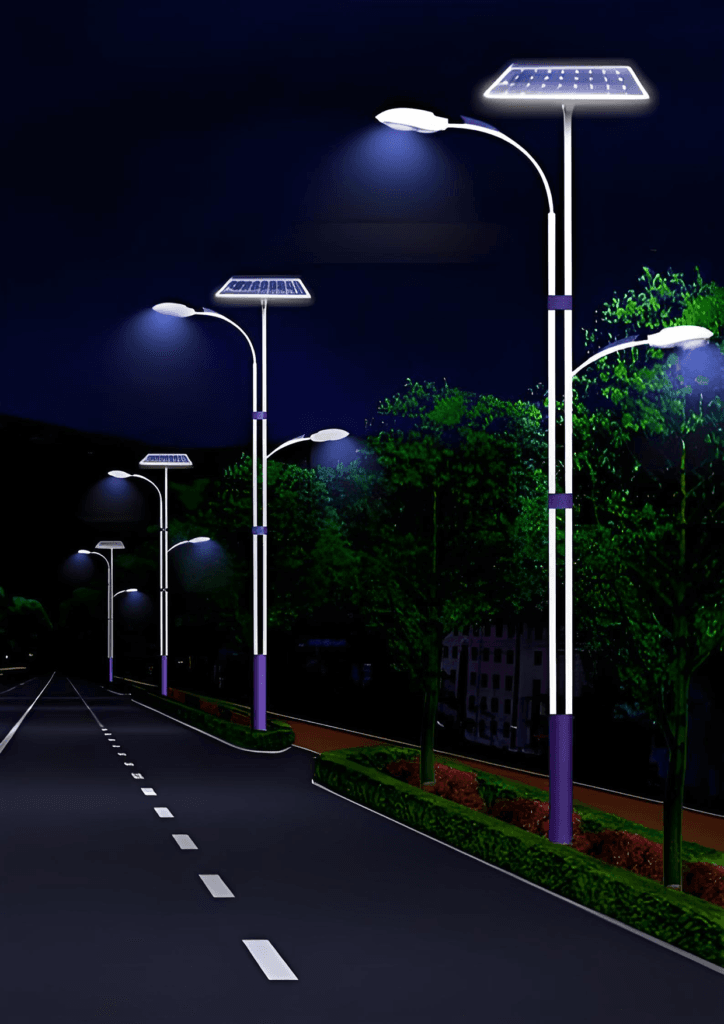Table of Contents
- Introduction
- 1) [Lead-Acid]in Government Projects
- 2) [Lithium (LiFePO₄)] in Government Projects
- 3) [10-Year TCO Comparison]
- 4) Which Do Governments Choose?
- 5) Tender & Technical Advice
- FAQ
- Government Tender Checklist
Introduction
For governments and EPC contractors, the battery is the “fuel tank” of a solar street light. It directly decides:
- How many years the lights can run without replacement
- How much budget must be allocated for maintenance
- Whether the project passes compliance checks (UN38.3, IEC, EU Battery Regulation)
Two main options are compared: Lead-Acid vs. Lithium (LiFePO₄). Price is only one part; real differences appear in lifespan, safety, and total cost over 10 years.
1) Lead-Acid in Government Projects
Why it is still used
- 40–50% cheaper upfront than lithium
- Mature technology, local teams are familiar
- Recycling systems exist in many developing countries
Problems after 2–3 years
- Short life span: 500–1,000 cycles, ≈2–3 years in daily use
- Heavy: 100Ah ≈ 32–35 kg → higher shipping, foundation, and installation costs
- Weak in hot climates: Faster failure in Africa & Middle East (often <2 years)
- Frequent replacements: For 1,000 lights, every replacement = trucks, labor, and downtime
Note: Lead-acid may fit small, short-term village projects but is not suitable for national highways or donor-funded programs.
2) Lithium (LiFePO₄) in Government Projects
Advantages
- Long lifespan: ≥6,000 cycles = 10–15 years
- Light weight: 100Ah ≈ 11–12 kg, one-third of lead-acid
- Higher usable energy: Depth of discharge (DoD) ~90% vs. ~60% for lead-acid
- Stable at high temperatures: Works reliably at 45–55°C
- Compliance ready: UN38.3, IEC, MSDS, EU Battery Regulation
Disadvantages
- 1.5–2× higher upfront cost than lead-acid
- Needs proper BMS (Battery Management System)
- Recycling systems are developing in some regions
Note: Despite higher CAPEX, Lithium reduces long-term OPEX, which is why large EPC tenders prefer it.
---
3) 10-Year TCO Comparison
| Parameter | Lead-Acid | Lithium (LiFePO₄) |
|---|---|---|
| Cycle life | 500–1,000 (2–3 yrs) | 6,000+ (10–15 yrs) |
| Replacement frequency | 3–4 times in 10 yrs | 0–1 time |
| Weight (100Ah) | ~32–35 kg | ~11–12 kg |
| Usable energy (DoD) | ~60% | ~90% |
| Shipping & foundation cost | High | Low |
| Compliance documents | Limited | UN38.3, IEC, EU ready |
| 10-Year OPEX (1,000 lights) | >$300,000 | <$80,000 |
Example:
1,000 units with lead-acid require 3 full replacements in 10 years. Lithium usually lasts the entire period. This is why World Bank and IFC-funded tenders now specify lithium.
4) Which Do Governments Choose?
- Small, budget-limited projects → Sometimes lead-acid
- Large highways, smart city programs, donor-funded projects → Mostly lithium
- High-temperature & remote regions → Lithium is preferred, since replacement logistics are costly and slow
5) Tender & Technical Advice
- Ask suppliers for ≥6,000 cycle life test reports (third-party).
- Require UN38.3 + MSDS for each battery model. Missing = customs or shipping delays.
- Evaluate 10-year TCO, not only CAPEX.
- Put compliance files as a separate appendix in the tender folder.
- Define working conditions clearly (e.g., ≥12h × 3 nights, 45–55°C ambient).
FAQ
Q1. Can lead-acid survive 50°C summer?
In hot regions, lifetime often drops below 2 years.
Q2. Lithium is more expensive. Can governments accept it?
Yes, because the 10-year OPEX is lower. Donor/loan-funded projects prefer lithium.
Q3. What compliance documents are mandatory?
UN38.3, MSDS, IEC, IP/IK test, corrosion/salt spray report, EU Battery Regulation (for EU).
Q4. How to guarantee 3 nights of lighting during rainy season?
Combine high-efficacy LED (≥230 lm/W), properly sized battery (90% DoD), and smart dimming.
Government Tender Checklist
- Battery: LiFePO₄, ≥6,000 cycles with third-party report
- Compliance: UN38.3, MSDS, IEC, IP66/IK08, ISO 9227 salt spray test
- Performance: ≥12h × 3 nights, validated under 45–55°C conditions
- TCO: Provide 10-year cost analysis (include replacements, labor, downtime)
- Documents: Compliance attachments as a separate appendix with index


